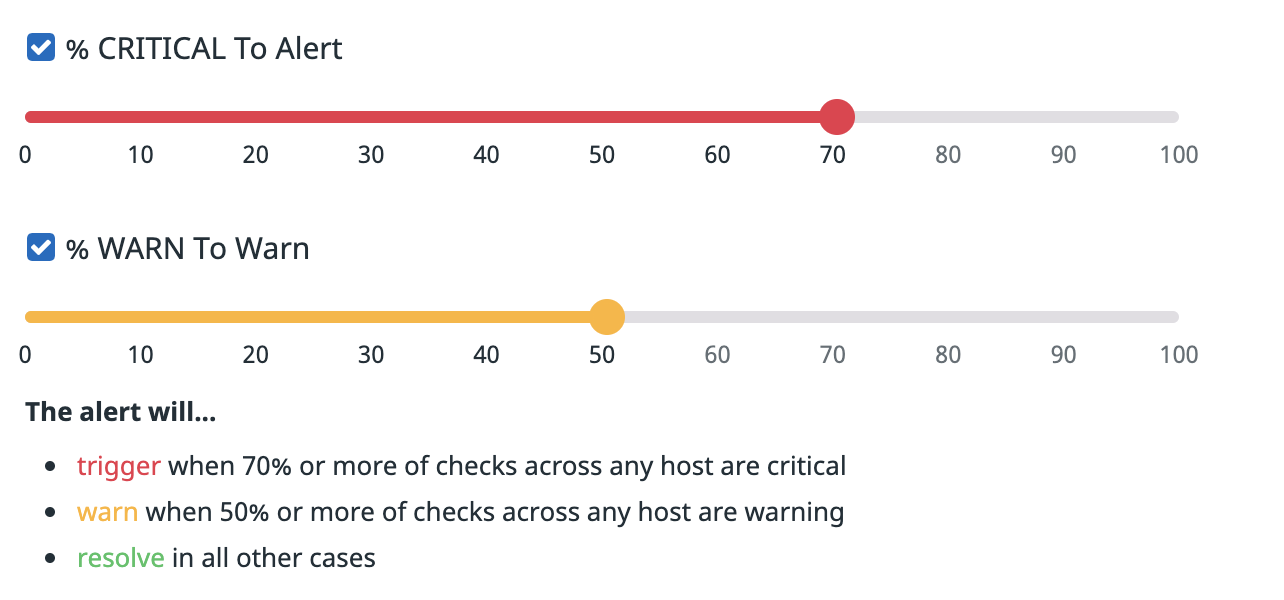- Essentials
- Getting Started
- Datadog
- Datadog Site
- DevSecOps
- Serverless for AWS Lambda
- Agent
- Integrations
- Containers
- Dashboards
- Monitors
- Logs
- APM Tracing
- Profiler
- Tags
- API
- Service Catalog
- Session Replay
- Continuous Testing
- Synthetic Monitoring
- Incident Management
- Database Monitoring
- Cloud Security Management
- Cloud SIEM
- Application Security Management
- Workflow Automation
- CI Visibility
- Test Visibility
- Intelligent Test Runner
- Code Analysis
- Learning Center
- Support
- Glossary
- Standard Attributes
- Guides
- Agent
- Integrations
- OpenTelemetry
- Developers
- Authorization
- DogStatsD
- Custom Checks
- Integrations
- Create an Agent-based Integration
- Create an API Integration
- Create a Log Pipeline
- Integration Assets Reference
- Build a Marketplace Offering
- Create a Tile
- Create an Integration Dashboard
- Create a Recommended Monitor
- Create a Cloud SIEM Detection Rule
- OAuth for Integrations
- Install Agent Integration Developer Tool
- Service Checks
- IDE Plugins
- Community
- Guides
- API
- Datadog Mobile App
- CoScreen
- Cloudcraft
- In The App
- Dashboards
- Notebooks
- DDSQL Editor
- Sheets
- Monitors and Alerting
- Infrastructure
- Metrics
- Watchdog
- Bits AI
- Service Catalog
- API Catalog
- Error Tracking
- Service Management
- Infrastructure
- Application Performance
- APM
- Continuous Profiler
- Database Monitoring
- Data Streams Monitoring
- Data Jobs Monitoring
- Digital Experience
- Real User Monitoring
- Product Analytics
- Synthetic Testing and Monitoring
- Continuous Testing
- Software Delivery
- CI Visibility
- CD Visibility
- Test Visibility
- Intelligent Test Runner
- Code Analysis
- Quality Gates
- DORA Metrics
- Security
- Security Overview
- Cloud SIEM
- Cloud Security Management
- Application Security Management
- AI Observability
- Log Management
- Observability Pipelines
- Log Management
- Administration
Process Check Monitor
Overview
A process check monitor watches the status produced by the Agent check process.up. At the Agent level you can configure your check thresholds based on the number of matching processes.
Monitor creation
To create a process check monitor in Datadog, use the main navigation: Monitors –> New Monitor –> Process Check.
Pick a process
From the dropdown list, select a process to monitor. Filter the list by entering your search criteria.
Pick monitor scope
Select the hosts to monitor by choosing host names, tags, or choose All Monitored Hosts. Only hosts or tags reporting a status for the selected process are displayed. If you need to exclude certain hosts, use the second field to list names or tags.
- The include field uses
ANDlogic. All listed host names and tags must be present on a host for it to be included. - The exclude field uses
ORlogic. Any host with a listed name or tag is excluded.
Set alert conditions
A check alert tracks consecutive statuses submitted per check grouping and compares it to your thresholds. For process check monitors, the groups are static: host and process.
Set up the check alert:
Trigger the alert after selected consecutive failures:
<NUMBER>Each check run submits a single status of
OK,WARN, orCRITICAL. Choose how many consecutive runs with theWARNandCRITICALstatus trigger a notification. For example, your process might have a single blip where connection fails. If you set this value to> 1, the blip is ignored but a problem with more than one consecutive failure triggers a notification.Resolve the alert after selected consecutive successes:
<NUMBER>Choose how many consecutive runs with the
OKstatus resolves the alert.
A cluster alert calculates the percent of process checks in a given status and compares it to your thresholds.
Set up a cluster alert:
Decide whether or not to group your process checks according to a tag.
Ungroupedcalculates the status percentage across all sources.Groupedcalculates the status percentage on a per group basis.Select the percentage for alert and warn thresholds. Only one setting (alert or warn) is required.
Each check tagged with a distinct combination of tags is considered to be a distinct check in the cluster. Only the status of the last check of each combination of tags is taken into account in the cluster percentage calculation.
For example, a cluster check monitor grouped by environment can alert if more that 70% of the checks on any of the environments submit a CRITICAL status, and warn if more that 70% of the checks on any of the environments submit a WARN status.
Advanced alert conditions
See the Monitor configuration documentation for information on No data, Auto resolve, and New group delay options.
Notifications
For detailed instructions on the Configure notifications and automations section, see the Notifications page.
Further Reading
Additional helpful documentation, links, and articles:

